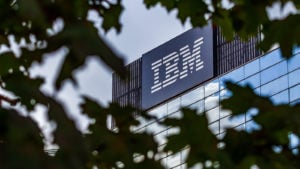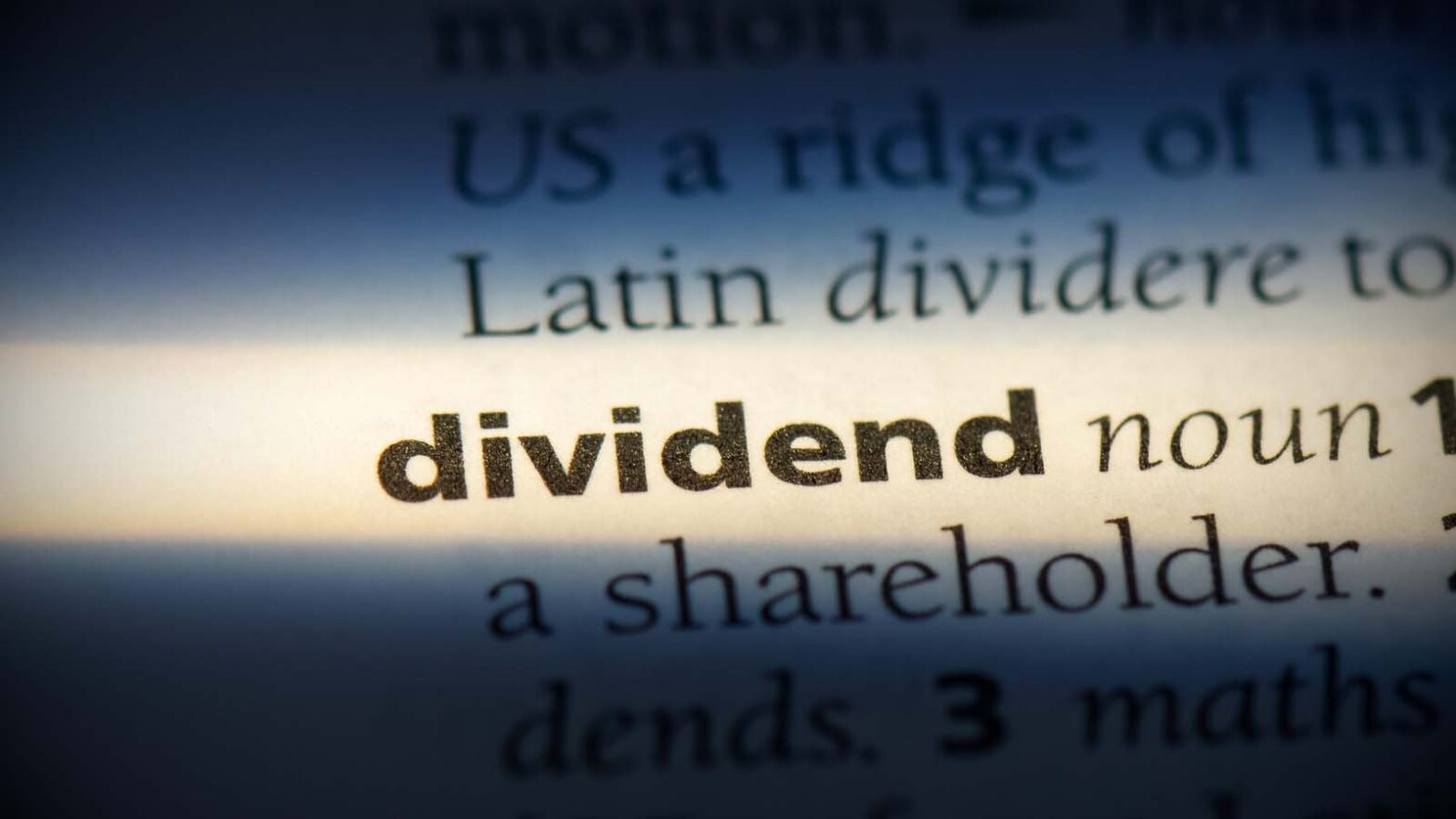With the equities market seemingly soaring to one plateau after another, bringing up dividend aristocrat stocks seems overly cautious. These ideas represent companies that have increased their payout annually for at least 25 years. By nature, this is a cautious play but it’s never a bad idea to exercise some prudence.
Look, no one’s saying that investors should hit the panic button and not believe the incredible resilience the equities space has demonstrated. However, it’s also true that the smart money is diversifying its exposure. Recently, we saw a record outflow away from tech stocks. At the same time, there have been major moves into investment-grade bonds.
Again, this dynamic alone doesn’t justify a panicked response. However, after such a searing ride in the innovation space, it makes sense to spread some of the profits around. With that in mind, below are dividend aristocrat stocks to consider.
Target (TGT)

Source: Sundry Photography / Shutterstock.com
As a big-box retailer that truly offers a one-stop shopping experience, Target (NYSE:TGT) arguably makes an excellent case for dividend aristocrat stocks. People need their stuff and while e-commerce is popular, sometimes, folks need their stuff right away. Target can accommodate. And you know what it’s also accommodating? A forward dividend yield of 2.61%.
Notably, the company has been increasing its payouts annually for the past 53 years. So, it’s not just one of the dividend aristocrat stocks – it’s a dividend king. Further, the payout ratio is relatively low at 41.74%. Therefore, investors won’t have to toss and turn at night regarding yield sustainability. Target more than likely has your back.
Per data from Yahoo Finance, I’m digging the recent financial performances. In the past four quarters, the retailer has exceeded expectations for earnings per share. The average positive earnings surprise came out to a very robust 28%.
For the current fiscal year (2025), analysts believe Target will post EPS of $9.40. That would be an improvement over last year’s print of $8.94.
Johnson & Johnson (JNJ)

Source: Alexander Tolstykh / Shutterstock.com
A healthcare giant, Johnson & Johnson (NYSE:JNJ) with last year’s spinoff of its consumer health products division now focuses on pharmaceuticals and medical technology. Subsequently, the renewed and sharpened focus could serve JNJ well. Currently, J&J ranks among the favorites for dividend aristocrat stocks and I don’t expect much to change moving forward.
Right now, it posts a solid forward dividend yield of 3.07%. That’s well above the healthcare sector’s average yield of 1.58%. Notably, the company enjoys 62 years of annual payout increases. Along with a payout ratio of 43.31%, stakeholders can rest easy at night. This is passive income you can trust.
To be fair, the company had some shaky earnings performances last year. In the first and second quarters, J&J missed its EPS target, albeit by an average of 3%. However, management began righting the ship in the second half. During this period, the average positive earnings surprise landed at exactly 3%.
For the current fiscal year, analysts anticipate that EPS will clock in at $10.65. That would be a solid improvement over last year’s print of $9.92.
Coca-Cola (KO)

Source: monticello / Shutterstock
A soft drink and beverages giant, Coca-Cola (NYSE:KO) represents one of the top dividend aristocrat stocks thanks to its enormous brand presence. Moving forward, it should also benefit from the trade-down effect as a cheap provider of caffeinated beverages. As for the topic of this article, Coca-Cola offers a forward dividend yield of 3.04%.
Conspicuously, this passive income runs higher than the consumer staple sector’s average yield of 1.89%. Granted, the payout ratio is a bit elevated at 61.34%, though it’s not by any means terrible. Further, Coca-Cola has been increasing its payout annually over the past 63 years. There’s just practically zero chance that management will give up this lofty record without a serious fight.
Even better, it’s not merely a dividend queen as its financial performance from last year demonstrated. The “worst” print arrived in Q4, when the company met its EPS target of 45 cents. Overall, in the past four quarters, the average positive earnings surprise came in at 5.23%.
For the current fiscal year, analysts project that EPS will land at $2.59. That’s a decent improvement over fiscal 2023’s result of $2.48.
NextEra Energy (NEE)

Source: IgorGolovniov/Shutterstock.com
I won’t sugarcoat it: renewable energy specialist NextEra Energy (NYSE:NEE) has had a rough performance over the past 52 weeks. Still, in recent sessions, the bulls have started to find their footing. Over the long run, the red ink could be a discounted idea. After all, renewables won’t be going away anytime soon. Fundamentally, then, NEE ranks among the compelling dividend aristocrat stocks.
As for the print itself, investors can treat themselves to a forward yield of 3.03%. Yes, that’s a bit lower than the utility sector’s average yield of 3.75%. However, because we’re dealing with a burgeoning market, this appears a trustworthy source of passive income. The payout ratio is very much acceptable at 56%. Also, the company commands 30 years of payout increases.
Also, last year’s financial performances were above expectations in terms of the bottom line. In the past four quarters, the average positive earnings surprise came out to 9.53%. For the current fiscal year, analysts believe that per-share profits will hit $3.40. That would be a solid run from 2023’s result of $3.17.
IBM (IBM)

Source: shutterstock.com/LCV
I’m going to be talking about IBM (NYSE:IBM) all day. While so many enterprises have made such a big fuss about integrating artificial intelligence, Big Blue is truly putting its money where its mouth is. Last year, management expressed its intentions to replace thousands of its (human) workers with AI. You can’t accelerate productivity better than that.
Even better, while you’re waiting for this narrative to pan out, you can enjoy a forward dividend yield of 3.48%. That’s well above the tech sectors average yield of 1.37%. Sure, the payout ratio is toward the elevated side at 62.28%. Nevertheless, the company enjoys a track record of 28 years of rising payouts. You can probably sleep easy on this one.
Also, while Big Blue hasn’t exactly lit up the board, it’s been a steady hand last year. Over the past four quarters, the company generated a positive earnings surprise of 5.58%. For the current fiscal year, analysts believe EPS will hit $9.29. That’s up noticeably from last year’s print of $8.85.
Essex Property Trust (ESS)

Source: Vitalii Vodolazskyi / Shutterstock
Structured as a real estate investment trust (REIT), Essex Property Trust (NYSE:ESS) acquires, develops, redevelops, and manages multifamily residential properties in select west coast markets in the U.S. Per its public profile, the REIT has ownership interest in 252 apartment communities comprising approximately 62,000 apartment homes. Fundamentally, ESS ranks among the tempting dividend aristocrat stocks because we all have to live somewhere.
As for the passive income, Essex is quite generous, offering a forward dividend yield of 4.05%. To be fair, the payout ratio is steep at 170.15%. That’s obviously a risk factor to consider. Nevertheless, REITs generally tend to run a higher-than-average payout ratio compared to non-trust entities. Also, with a track record of 30 years of consecutive payout increases, Essex is hardly a fly-by-night operation.
Still, in exchange for the higher payout, investors must absorb a greater risk profile. In particular, the RETI’s Q4 earnings report was ugly, delivering EPS of $1.02 against an expected target of $1.46. Further, analysts are looking at per-share profits of $5.32 this year, below the $6.32 posted in 2023.
However, the overriding relevance of the business could be enough to seal the deal. It’s an idea to watch.
Chevron (CVX)

Source: Sundry Photography / Shutterstock.com
As a hydrocarbon energy giant, Chevron (NYSE:CVX) carries some questions regarding its future viability. With so much emphasis placed on green and renewable energy solutions, entities like Chevron appear to be on borrowed time. Then again, very few resources feature the same energy density as fossil fuels. Plus, the world still runs on oil, making CVX a worthwhile idea for dividend aristocrat stocks.
Presently, Chevron offers a forward yield of 4.22%. That’s just under the energy sector’s average yield of 4.24%. However, other factors play very much into CVX stock’s favor. For one thing, the payout ratio is relatively low at 45.28%, inspiring confidence regarding yield sustainability. More importantly, the company features a track record of 37 years of consecutive payout increases.
Overall, if you took away the clunker of an earnings performance in Q3, Chevron has more then held its own. Excepting Q3, the company’s average positive earnings surprise came out to 5.1%. For the current fiscal year, the average EPS target calls for $12.62, which is below last year’s print of $13.13.
However, the high-side estimate calls for $14.55. That might not be unreasonable given current geopolitical dynamics, making CVX an intriguing upside opportunity.
On the date of publication, Josh Enomoto did not have (either directly or indirectly) any positions in the securities mentioned in this article. The opinions expressed in this article are those of the writer, subject to the InvestorPlace.com Publishing Guidelines.

